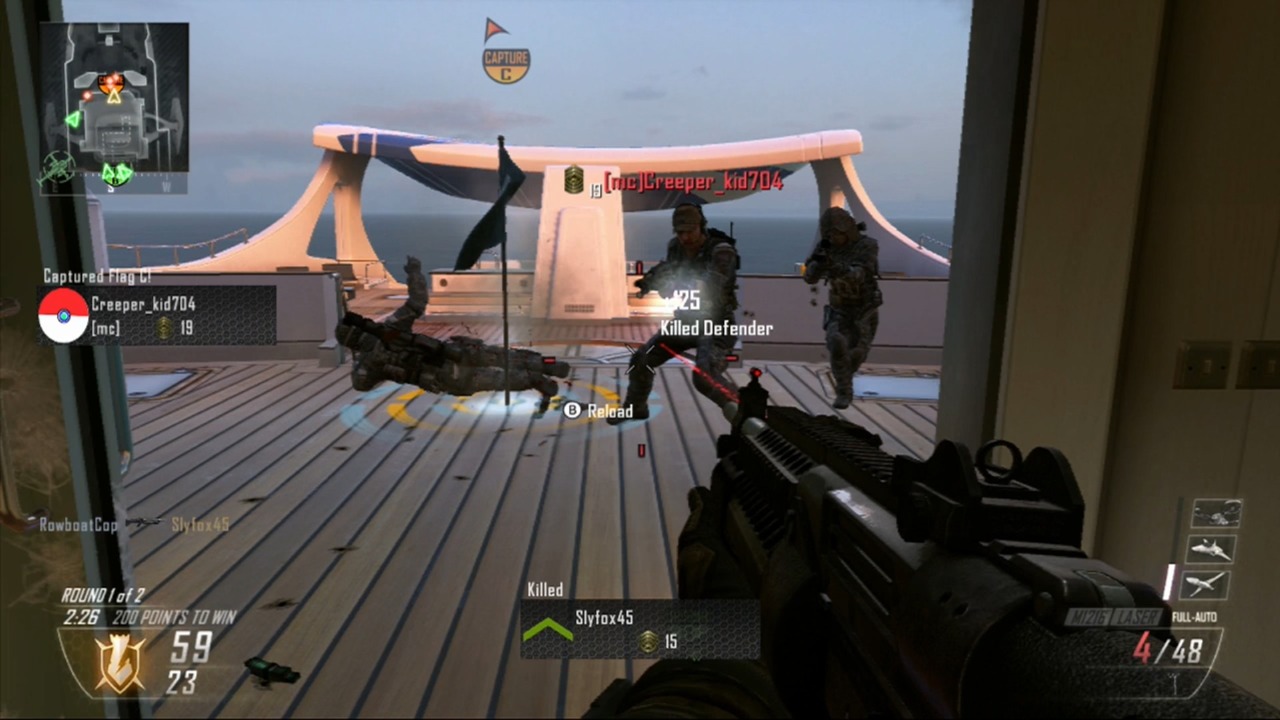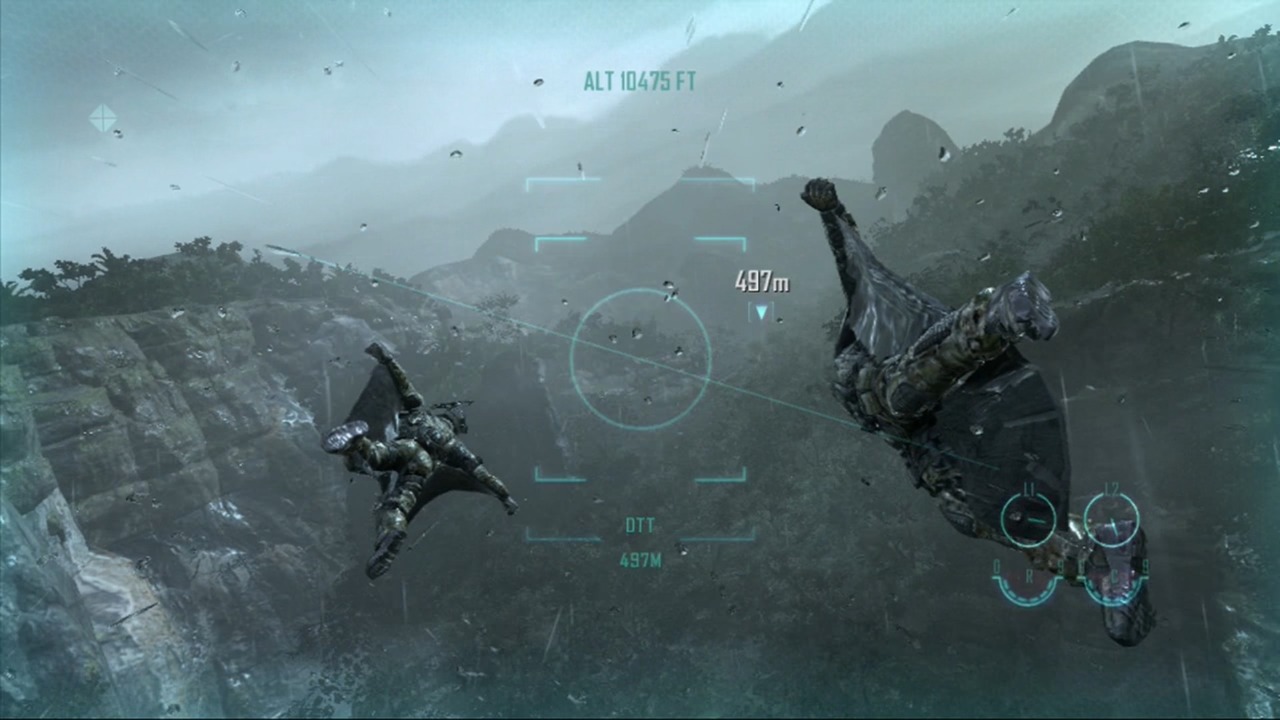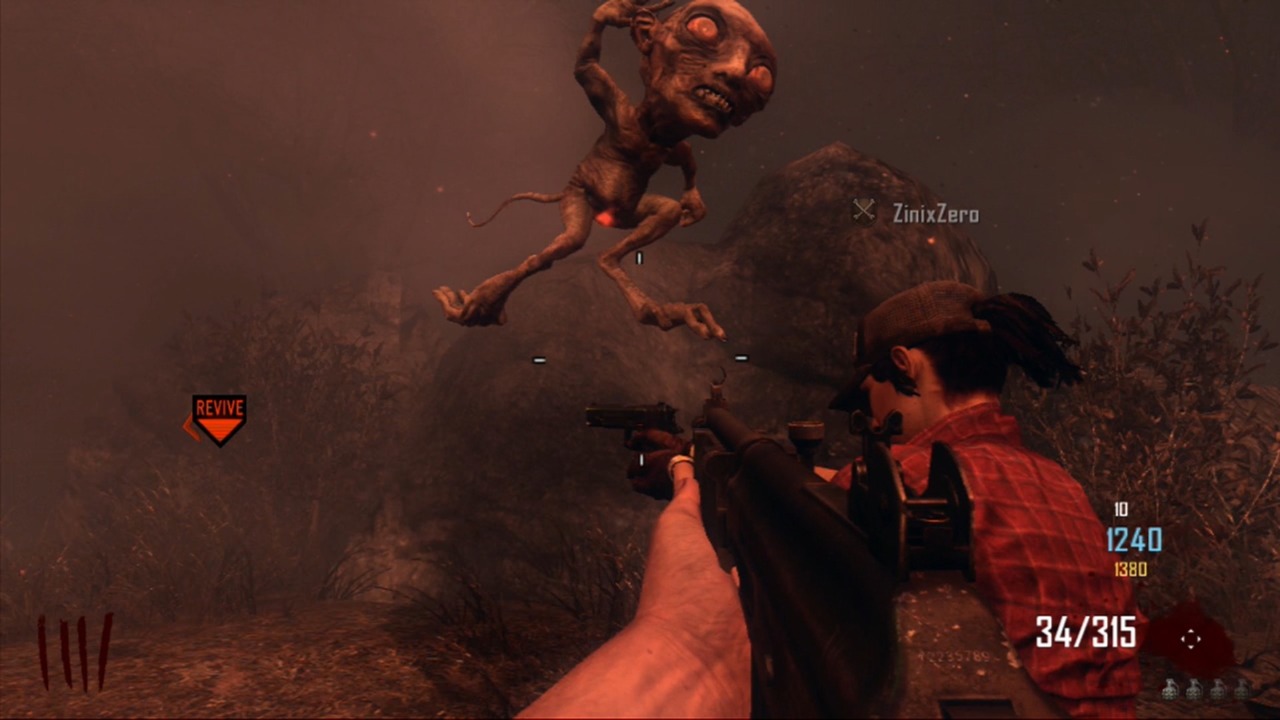The past and the future meet on many levels in Call of Duty: Black Ops II. In the campaign, you relive the events that made a man into a villain, then fight to avert his plans for future catastrophe. The competitive multiplayer offers the same frenetic intensity of past games in the series while providing a new way to play that subverts the history of these hallowed online battlefields. And the Wii U finally lets owners of a Nintendo console experience the visual fidelity that players on other consoles have enjoyed for years, adding some novel ways to experience the action courtesy of the GamePad. Poised between past and future, Black Ops II finds solid footing, providing another great ride on the Call of Duty rollercoaster.
If you played Call of Duty on the Wii, you can stick with your preferred control scheme here as the game supports the Wii Remote with either the Nunchuk or the Classic Controller. The new pro controller is also a great option, but the GamePad offers a few appealing novelties. Most notably, you can play the game entirely on the tablet screen, leaving your TV free for other uses. The screen shows a good amount of detail and runs at a smooth frame rate, making is possible to enjoy any game mode. It does have drawbacks, however, as the small screen area can make it tougher to spot mid-range foes and the button placement on the comparatively bulky GamePad take some getting used to.
This feature can also be used while someone else is playing on the television, enabling each player to have their own screen. You can team up or face-off in competitive multiplayer, both online and off, as well as take on the cooperative zombies mode. If you have a sizable main screen, you might be better off sticking with splitscreen play, but the added versatility of the GamePad is an asset to this version of the game.
As in the other versions, the ride starts off a bit rough as the game makes good on its pre-campaign warning of graphic content (which also lets you opt out of said content). Two early scenes linger on people burning alive, and while one ends up contributing to character development, the other is just gratuitous. Later cutscenes don't flinch from depicting gory violence, though of all the unpleasant sights you see throughout the story, the playful (and not at all gory) post-credits video might be the most appalling.
Fortunately, the campaign boasts an engaging story and a lot of entertaining action. It features the lead characters from the original Call of Duty: Black Ops, and though it references events from the past, a clear narrative thread emerges that is easy to follow. You jump between two time periods: the present, which is the year 2025, and the past, which spans about a decade during the Cold War. The narrative reflections of the elderly Frank Woods (a protagonist from Black Ops) weave these two timelines together, but the character that truly drives the story is the villain, Raul Menendez. During the Cold War missions, you follow Menendez's origin story and rise to power. In the 2025 missions, you desperately try to avert his catastrophic master plan. This parallel character development is deftly handled, infusing your missions with undercurrents of curiosity and urgency.
Things get even more intense when you are asked to make a choice. Press one button to kill a target, the other to let him live. The conditions of each choice vary and there are only a few of them, but even when you aren't responding to a prompt, you might be making a choice in a dramatic moment that will have consequences later. The main course of the campaign remains constant, but these decisions do affect the fate of some key characters. A few of these moments are sure to give you pause, adding some welcome weight to the proceedings, and there's a handy story rewind feature that lets you play earlier levels in order to see how different paths play out. There are also mission-specific challenges that give you ancillary goals to complete while you do so, further increasing the replay incentive.
You can also see some variance in the available strike missions, which are a new type of campaign level. These stages put you in a squad of soldiers and drones, and then let you choose which asset to control at any given time. Defending installations against enemy assault, escorting a convoy, and rescuing a hostage are some of the endeavors you might undertake. Though you have a team at your command, strike missions are still all about you gunning down foes. Your AI allies are only good at slightly hindering your enemies, so you end up doing the heavy lifting yourself, often while tracking activity on multiple fronts and hopping around to deal with advancing enemies. Having to consider the bigger picture is a nice change of pace for a series that has mostly involved just shooting what's in front of you, and these missions are a welcome shot in the arm for the familiar campaign pacing.
Of course, familiar as it may be, that pacing is still great. The campaign ebbs and flows as you move through a variety of diverse, detailed environments using an array of powerful weaponry to dispatch your foes, occasionally hopping into a jet or on to a horse for a short jaunt, or manning a missile turret to tame a swarm of hostile drones. A few neat gadgets and surprising gameplay moments satisfy the novelty quotient, but you still get the lingering feeling that you've done this all before. The new strike missions, dramatic decision points, and memorable villain help keep this concern at bay, however, and this feisty, enjoyable romp is more enticing to replay than other recent Call of Duty campaigns.
Black Ops II's competitive multiplayer has seen some changes as well, notably in the way you equip yourself before going into battle. The COD points system from Black Ops has been ditched in favor of a new token system that still affords you some control over the order in which you unlock new weapons and gear. The more interesting change is the new loadout system, which gives you ten points to play with and assigns a single point to every element of your loadout (guns, attachments, perks, lethal and tactical items). It offers a bit of flexibility if, say, you don't use a sidearm much but could really use an extra perk, and the new wild cards allow some limited creativity. Put one of these in your loadout, and you can go into battle with two well-equipped primary weapons, or you can load up on perks and bring just a knife and your wits.
These are two extreme examples, but tweaking your loadouts with the gear you've chosen to unlock still confers a sense of getting more powerful and better equipped for combat. These are still the fast and deadly battlefields that have drawn millions of players for years. Positioning and reflexes are king, firefights are over in the blink of an eye, and success is rewarded with deadly equipment and satisfying experience gains. New gear, new weapons, and new score streak rewards are sprinkled throughout, offering new martial capabilities and strategic wrinkles. Traditional gametypes and a few rule-bending party games all offer familiar frenetic fun, but don't expect to find a populated match in any mode at any time (like you can on the PC and other consoles). The player population is still relatively low, and though this limits what kinds of matches you can find, you can almost always find some kind of match.
Unfortunately, this low population means that one of Blacks Ops II's most interesting new modes might as well not exist at this point. League play changes up the familiar multiplayer formula by giving players access to the entire Black Ops II arsenal right from the start. You don't earn experience points in the same addictive way as you do in public matches, but league play levels the playing field from the get-go, letting anyone use whatever guns, attachments, grenades, and perks they want. It's a strange sensation, but it feels liberating, allowing you to focus on the action at hand without the temptation to play in certain ways to target certain rewards. This analysis is based on time spent with other platforms, however, as we were unable to get into a single league play match after hours of trying over the course of many days.
The other intriguing facet of league play is that it sorts players into divisions based on skill in an effort to create more balanced matches. This is an appealing idea, because big disparities in player skill lead to unsatisfying matches for both winners and losers. However, this kind of sorting is meaningless as of this writing and, barring a massive swell in the player base that would facilitate the creation of multiple divisions, is likely to remain meaningless.

Even though there aren't tons of players active online in Black Ops II, there are still enough to make dabbling in the sharing tools worthwhile. In theater mode, you can watch your previous matches, edit highlight clips (or let the game take a shot at it for you), grab screenshots, and upload media to share with those on your friends list and the community at large. You can also peruse COD TV in order to enjoy the content that others have shared.
There's also a new feature called "codcasting" that aims to introduce a new player type to the Call of Duty scene. By queuing up a game film and selecting this feature, you can watch the match with a suite of tools that let you highlight the action. You can track different players, watch certain areas with a free-roaming camera, and even use a picture-in-picture mode to see the standings and the action side by side. Though this has the potential to allow players to generate some dynamic, entertaining play-by-play videos, its current manifestation is very limited. You can only codcast saved films of games you have played in, and with no way to stream your codcast over the internet, your only potential audience is the five other players you could invite in to your lobby. Future updates to this feature could make it more useful, but as of now it just feels like a shell of what it could be.
Black Ops II also heralds the return of zombies mode. Now in its third incarnation, this cooperative survival mode is still frantic, challenging, and home to some weird humor. But though some of the new missions play with the formula by adding a bus to catch or a competing team to watch out for, the core action has grown stale. Shooting the bullet-sponge zombies lacks the satisfying immediacy that Call of Duty thrives on, and dealing with their lurching, single-minded attacks grows dull even as they get faster and more numerous. The new maps feature veins of fire that flare up when you cross them and obscure your vision, adding more visual sludge to the already murky environments. Perhaps the fire is intended as some kind of platforming challenge--jumping frequently seems to be the best way to avoid it--but hopping around doesn't make the environments any less ugly or the enemies any less boring.
Though zombies mode is stagnating, the rest of Black Ops II is lively, and it is right at home on the Wii U. Developer Treyarch's storytelling prowess has once again resulted in an engaging, exciting campaign, and the online multiplayer population is likely to grow as more people acquire the new console. Though it's a shame that league play is dead on arrival, there's still a lot of taut action to enjoy online, helping Black Ops II provide the Wii U with its first great shooter experience.


